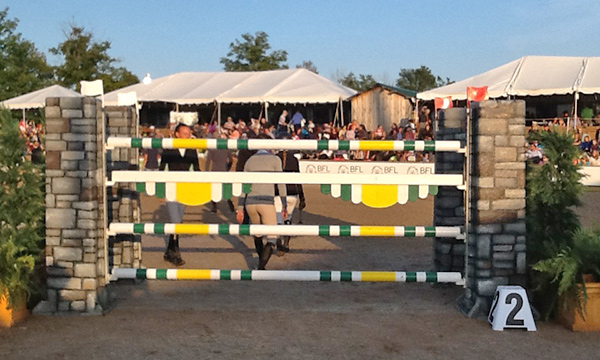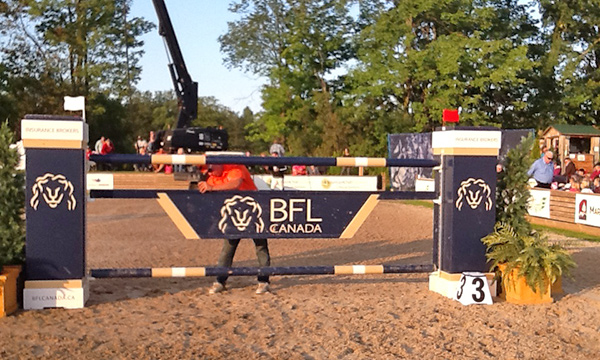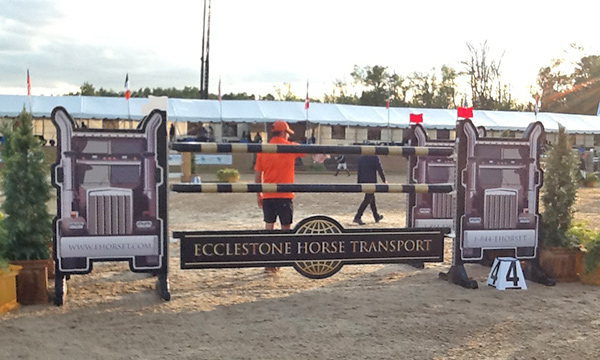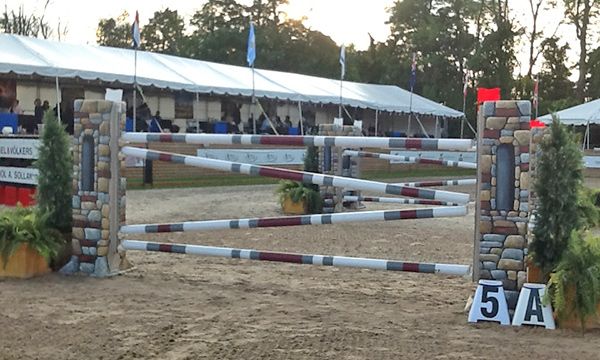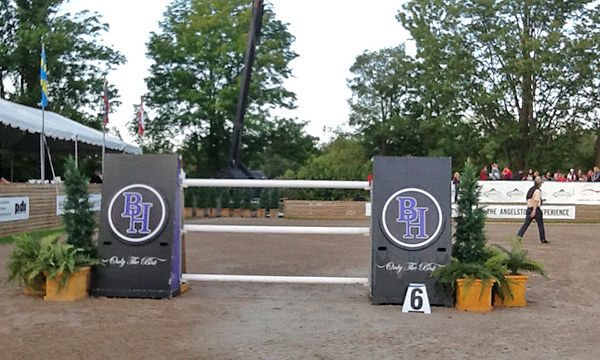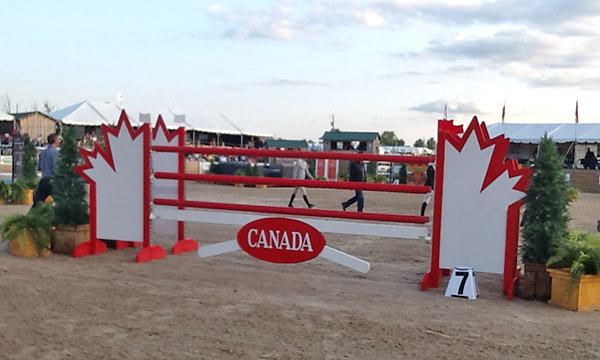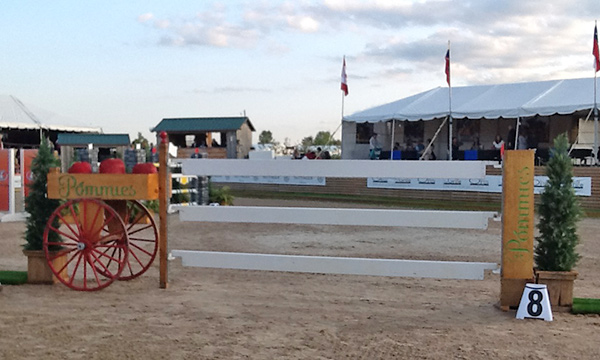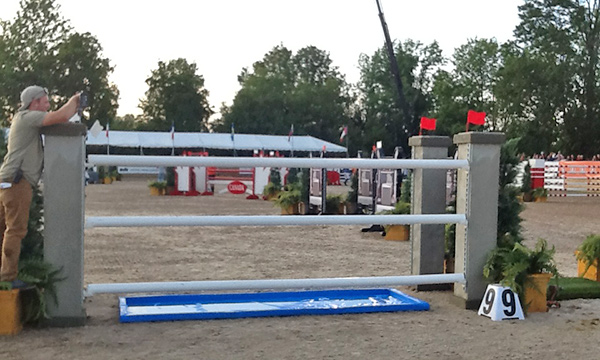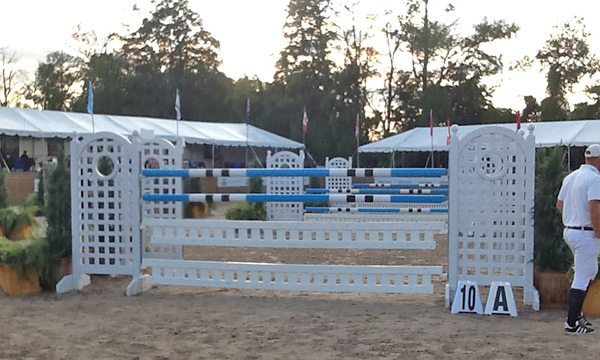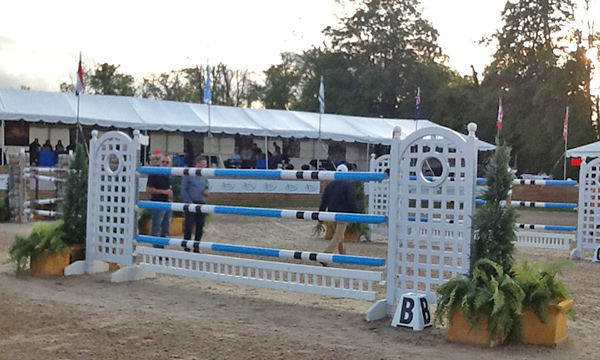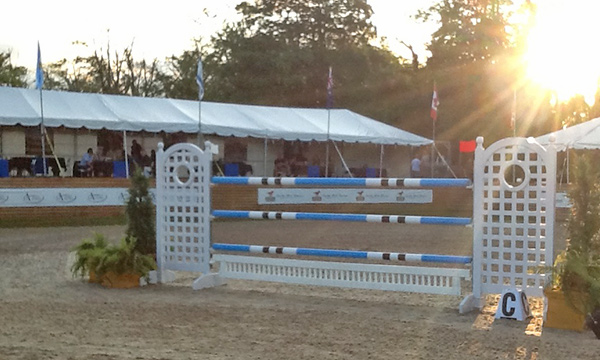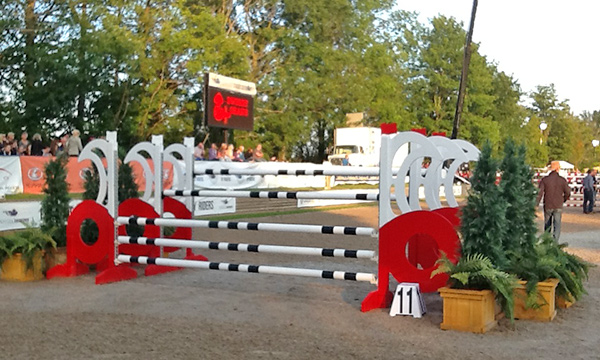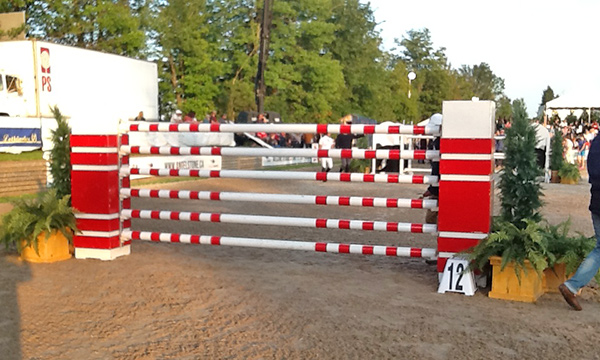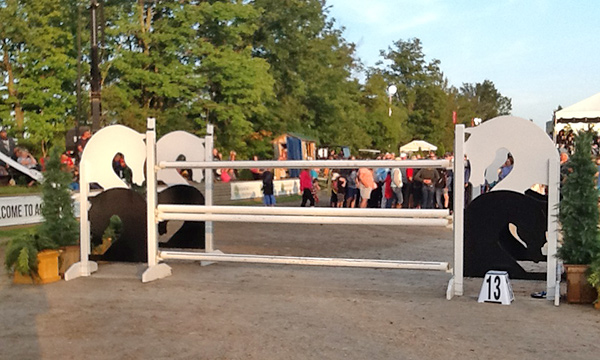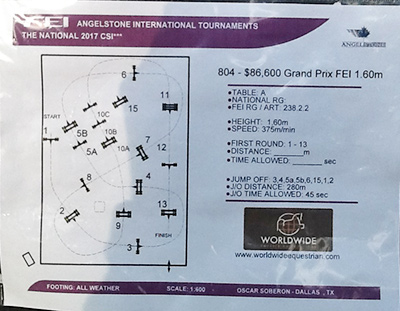
The weather is very good for show jumping but maybe a little chilly for the best crowd of the season. Angelstone has done a very good job of presenting show jumping to the local and not so local residents. This is the first Saturday Night Lights Grand Prix that is totally under the lights. The start time is later than usual (8:00 p.m.) so the lights can be in play from the first entry to the last. The natural twilight will be a factor in the first nine competitors.
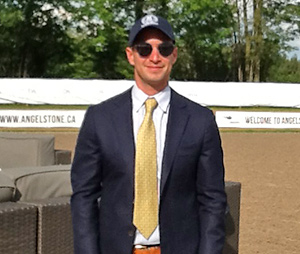
The grand prix tonight will be well within the guidelines of a 3* event and the TA that was established with the speed of 375mm was totally fair at 85 seconds and was not changed. The final results were much different than any GP on the summer circuit to date. In comparison with the GP last week (FEI 3*) the heights and widths were very similar with this course using a little more width and the technical aspects were in play with more related lines. I will try to explain why the final outcome of the first round was so different from the other grand prix this season, in my opinion. I think we should begin the walk of the $86,000 FEI3* Delta Hotel and Dwight Crane 1.60m grand prix.
#1 The wall. 1.48m or 4.10ft. This was a great starting fence and very quickly ended the evening for two entries.
#2 oxer 1.50/1.50m or 5/5ft comes from #1 on a bending rein left on no given distance (eight or nine strides) and was pushed to the floor four times.
#3 vertical 1.50m or 5ft comes on the continuing left bend at the in-gate and was never faulted tonight.
#4 oxer 1.50/1.50m or 5/5ft comes on full turn left away from the in-gate and kissed the all- weather footing six times.
#5a vertical 1.50m or 5ft comes on the bending right rein and with no given distance. This fence saw four rails touch mother earth four times and the scene of one refusal.
#5b oxer 1.47/1.55m or 4.10/5.1ft with a distance of 7.90m or 25.9ft and was removed from the top cups three times.
#6 short pole vertical 1.55m or 5.1ft comes on the right turn from #5b and was only punished one time.
#7 narrow oxer 1.55/1.10m or 5.1/3.6ft. This obstacle was made of solid dark red poles and a solid red plank . It was the bogey fence on the course with 12 failed attempts. It came from #6 on the continuing right rein and no given distance.
#8 plank vertical 1.56m or 5.1ft comes from #7 in a straight line with a distance of 27m or 88.6ft and was never faulted on the evening.
#9 oxer with a Liverpool 1.50/1.60m or 5/5.3ft comes on a full left turn back up the slope and had nine splash downs. Up the hill and very airy this was a difficult jump.
#10a oxer 1.50/1.50m or 5/5ft comes from #9 on a soft bend on the left rein with a distance of 29.20m or 95.9ft. At this point on the course we saw two refusals and elimination due to the refusals. We also had five rails touch down. In addition to these faults we had a serious fall of both horse and rider. I believe that both will be okay, but it was a reminder that this is a dangerous sport and we should never forget that. The innovation of the safety cup is the greatest asset to the sport of show jumping since we began the sport. The work of Chris Rintoul and his ring crew was spot on did exactly what was required in this serious situation. This was a job well done. A fall does result in elimination.
#10b vertical 1.50m or 5ft comes from #10a with a distance of 7.90m or 25.9ft at this point we saw two rails and one refusal.
#10c vertical 1.53m or 5.1ft with a distance of 8.00m or 26.3ft and we saw one refusal and five poles find their final resting place.
#11 triple bar 1.50/1.80 or 5/5.9ft comes on the full right turn and coming home there were two back poles fail to remain in the top cups.
#12 vertical 1.57m or 5.3ft comes in straight line from #11 on a distance of 22.80m or 74.9ft and with the forward ride of 5 strides there were three failed attempts.
#13 oxer 1.50/1.70m or 5/5.6ft and the final fence in the first round fell to earth six times.
The final tally of the first round are, there were four clean rounds and there were four rounds of four faults. We saw six rounds of eight faults. We also had six rounds of 12 faults. We had three vws, one fall and two eliminations. The TA was set at 85 seconds and was not changed. Half of the class was within eight faults of the jump off and this is a more aggressive number than we have seen for a while. This was a very good track and gave a good number for the jump off, but there was an aggressive result after the clear rounds. Why did we see these aggressive numbers? In my opinion, the lighting was poor. There were many dark areas in the ring and the shadows were distracting to both the horse and the rider. My count gives 48 faults at the oxers and only 15 at the verticals. It is my opinion that the horses had problems seeing the back rail of the oxers because of the shadows and the darker areas of the ring. I believe that if this class had been held in daylight there would have been more clean rounds and the unsuccessful rounds would have been less drastic.
We had two clean rounds in the first nine entries and two more during the rest of the class. The first nine rounds had twilight in their favour. The course became more difficult as nighttime and darkness was replaced by the lighting system. There have been many grand prix over the last few seasons under the same conditions and without the problems encountered tonight, so this is not really a true result based only on the class tonight, but some study of the lighting should be considered. The course tonight was a really good track and Oscar deserves congratulations for his work. Some things are out of the control of the course designer. We look forward to seeing him in a few weeks at Palgrave.
Before the end of tonight’s walk on a totally different note I would like to thank Chris Rintoul. Dr. Paige Manning, David Robinson, the staff of Looking Back Farm and all the others who prevented major injuries to one of my daughter’s client’s horses. Thank you all. We are back here for the final week of this series at Angelstone and another walk.
Until then I am Dave Ballard.


